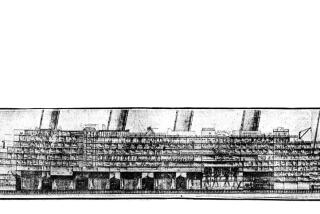A look inside prefab homes that are green — and gorgeous
Do you think a “prefab home” means boxy and unattractive?
Think again.
Author Sheri Koones — a pioneering voice for factory-built homes — is back with a new book that makes the case for energy efficient building that is easy on the eyes: “Prefabulous Small Houses,” (The Taunton Press, $32), which highlights 32 homes designed and built by architects and designers who understand sustainability — and style.
Comprised of homes ranging from 350- to 2,000-square-feet in size, the book offers a thoughtful take on what it means to build an ideal home. According to Koones, that means “building better, not bigger.”
The book provides detailed resources on everything from architects to steel prefab panels as well as floor plans and a glossary of terms for the uninitiated, such as “stack-effect cooling” (a way to cut soaring temperatures by using solar energy) and “rockwool insulation” (a type of eco-friendly insulation).
We recently caught up with Koones at her home in Connecticut. Here, she shares her thoughts on the positive benefits of small-scale, prefab construction:
What motivated these homeowners to downsize?
I think that all of them wanted a cozier, smaller environment. Many of them were bicyclists or skiers and they wanted to be able to go out and do that. They don’t want to be doing work every weekend and taking care of a house. They want to live their life and travel and not have all of their money tied up in a house.
Why small?
Living in a smaller house is a much better option for everybody. I can speak from personal experience. You know where your kids are, you know what they are doing. I have come across many people who have decided to live in a smaller house because they felt they weren’t connected to their kids.
These homes are small but not too small.
There is a big interest in tiny houses, but you are much better off with a more stable and safe foundation. The 352-square-foot Casita De Invierno in Florida has a special kind of screw foundation [spiral piers are screwed in to the soil to support the house] so even if there is a hurricane, it won’t blow away.
How did you choose the houses you included in the book?
I am very fussy. The homes have to be attractive in order to be inspirational, they have to be energy efficient and they must be built well.
The Sonoma house was built for the homeowner’s mother. How important is universal design in terms of aging in place?
As the U.S. population ages, universal design grows more important, and designers and engineers are developing new compliant products each year. Out of this concept evolved many now common universal design features in homes, such as grab bars in showers and adequate task lighting. Several such features were incorporated into the Whidbey Island House, including the threshold-free shower and entry, wide doorways, a drawer dishwasher (which can be easily accessed by someone who is impaired), and handles on cupboards (which can be used by those with limited dexterity) instead of knobs. In addition the outside doors have lever handles for easy access. Things happen in life. Young people fall in showers. Universal design is safer for everybody.
What do you want people to take away from the book?
A lot of people still think of prefab as boxy and unattractive and as double wide trailers. I want to show that prefab houses are faster to build and save money and materials. They can be built quickly by professionals in a protected environment and are not compromised. I hope people will consider the advantages of a smaller house and be inspired to build something that is comfortable, healthy, small and cozy, attractive and not waste their money on energy.
Twitter: @lisaboone19
Follow our design and gardening boards on Pinterest
ALSO:
Small prefabs as backyard offices
More Southern California home tours
Prefab homes for sophisticated tastes
Mimi Zeiger on design, density and her new book ‘Tiny Houses in the City’

